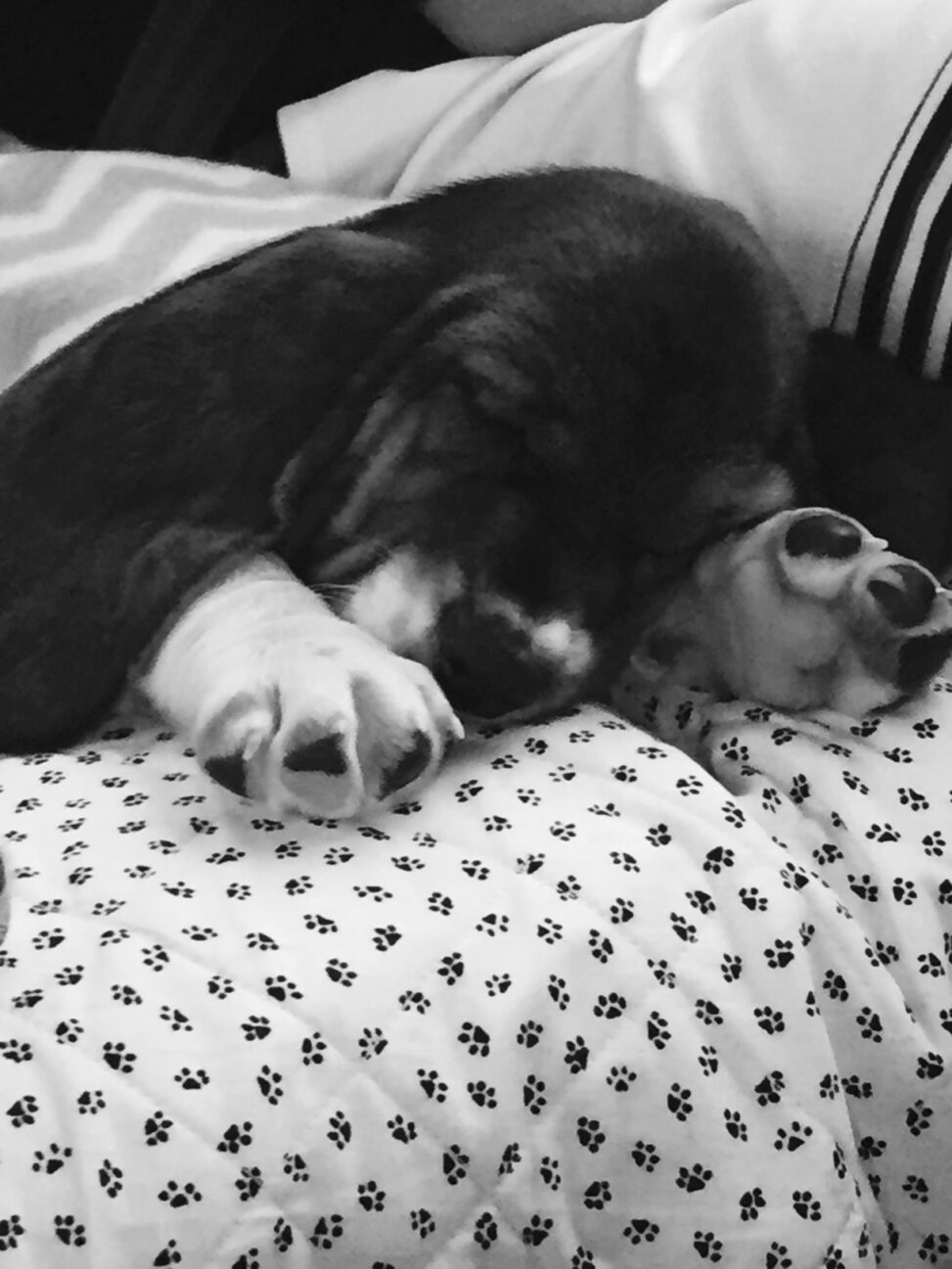For the 3rd edition of Leo’s blog post, I’m going to talk about how selective breeding causes deformities and diseases. In an article called “The Genetic Consequences of Dog Breed Formation,” it talks about how over time certain traits get selected, but oftentimes a negative gene will also get selected. A condition seen in lots of breeds is hip dysplasia. Leo is not exempt from that either, he has very weak hips that definitely limit how active he is. In my opinion, I think the fact that he is lazy and not as active will preserve them longer, but I could be very wrong. Using basset hounds as an example, they were selectively bred to be short with long droopy ears and a strong sense of smell. They did well at selecting those traits but negative side effects came with them.
For starters, Basset Hounds have very long bodies and large midsections, which puts a lot of strain on their backs and hips. Another one is ear infections because it is very difficult to keep their ears clean. The article dives deeper into the actual genetic consequences from selective breeding. Due to lack of diversity throughout each selected generation, harmful alleles and genes start to become more prevalent and consistently passed down through each generation. Leo and basset hounds don’t have a ton of genetic diseases that are common, but other dog breeds can be prone to cancer, and other nasty degenerative diseases. In the article a study was set up to test 10 very different European dog breeds to see how many alleles repeated in each breed. In every breed from a beagle to a rottweiler, they were shocked at how little “rare” alleles there were. This helps explain how over time a disease or condition could creep in and continue to be bred.
To wrap it back up, I have no room to talk because all of the dogs I have owned have been pretty close to purebred, but I do think that there needs to be a line when it comes to selective breeding. Especially when there are so many sheltered dogs, there’s no need to continue breeding dogs with well known defects. Very interesting topic to learn about, especially being someone very interested in science. Hopefully this helps bring awareness to the negative effects of pure breeds and why we should adopt more dogs.
Axelsson, E., Ljungvall, I., Bhoumik, P., Conn, L. B., Muren, E., Ohlsson, Å., Olsen, L. H., Engdahl, K., Hagman, R., Hanson, J., Kryvokhyzha, D., Pettersson, M., Grenet, O., Moggs, J., Del Rio-Espinola, A., Epe, C., Taillon, B., Tawari, N., Mane, S., Hawkins, T., … Lindblad-Toh, K. (2021). The genetic consequences of dog breed formation-Accumulation of deleterious genetic variation and fixation of mutations associated with myxomatous mitral valve disease in cavalier

Leave a Reply